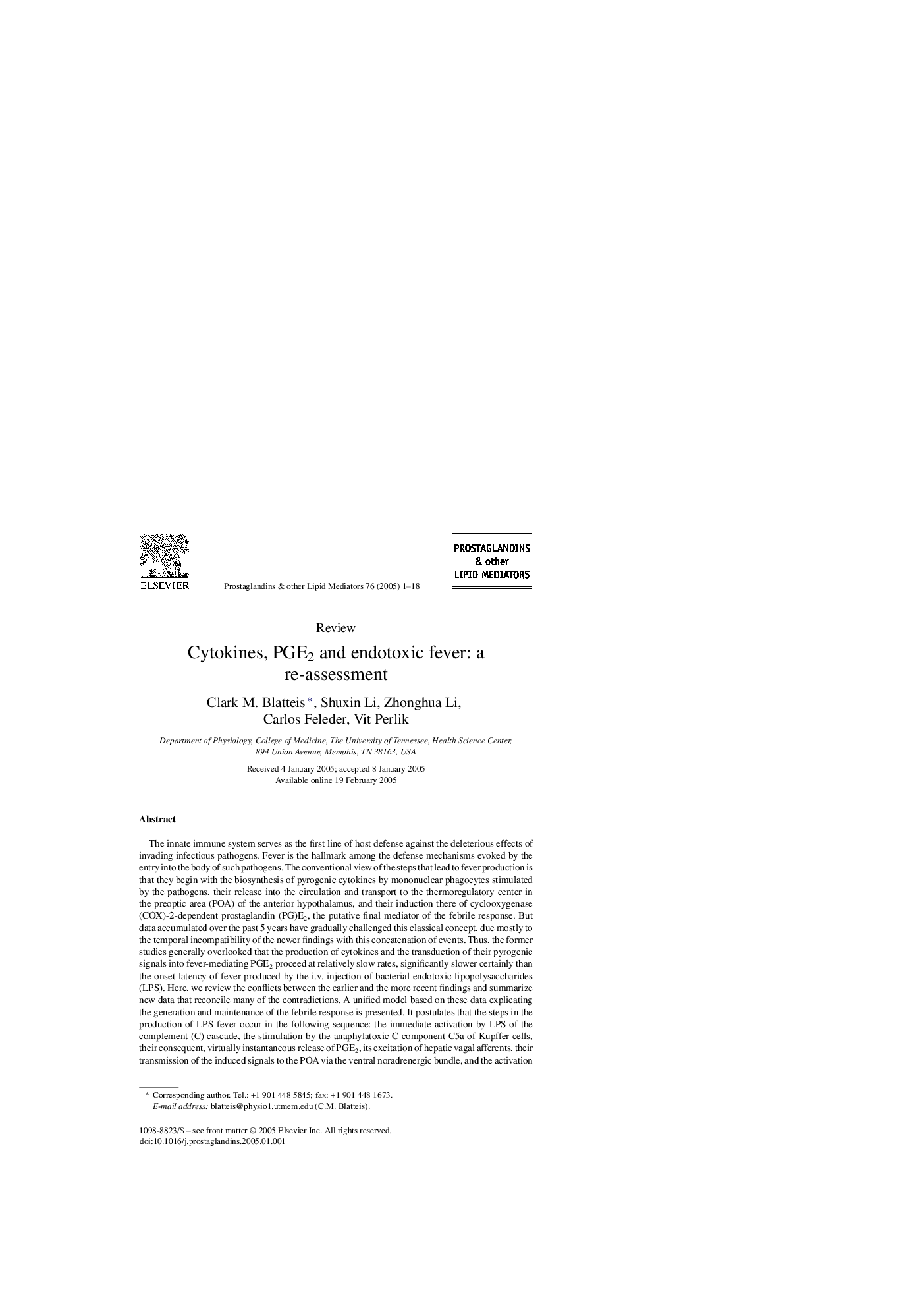| کد مقاله | کد نشریه | سال انتشار | مقاله انگلیسی | نسخه تمام متن |
|---|---|---|---|---|
| 9894076 | 1542260 | 2005 | 18 صفحه PDF | دانلود رایگان |
عنوان انگلیسی مقاله ISI
Cytokines, PGE2 and endotoxic fever: a re-assessment
دانلود مقاله + سفارش ترجمه
دانلود مقاله ISI انگلیسی
رایگان برای ایرانیان
کلمات کلیدی
موضوعات مرتبط
علوم زیستی و بیوفناوری
بیوشیمی، ژنتیک و زیست شناسی مولکولی
زیست شیمی
پیش نمایش صفحه اول مقاله

چکیده انگلیسی
The innate immune system serves as the first line of host defense against the deleterious effects of invading infectious pathogens. Fever is the hallmark among the defense mechanisms evoked by the entry into the body of such pathogens. The conventional view of the steps that lead to fever production is that they begin with the biosynthesis of pyrogenic cytokines by mononuclear phagocytes stimulated by the pathogens, their release into the circulation and transport to the thermoregulatory center in the preoptic area (POA) of the anterior hypothalamus, and their induction there of cyclooxygenase (COX)-2-dependent prostaglandin (PG)E2, the putative final mediator of the febrile response. But data accumulated over the past 5 years have gradually challenged this classical concept, due mostly to the temporal incompatibility of the newer findings with this concatenation of events. Thus, the former studies generally overlooked that the production of cytokines and the transduction of their pyrogenic signals into fever-mediating PGE2 proceed at relatively slow rates, significantly slower certainly than the onset latency of fever produced by the i.v. injection of bacterial endotoxic lipopolysaccharides (LPS). Here, we review the conflicts between the earlier and the more recent findings and summarize new data that reconcile many of the contradictions. A unified model based on these data explicating the generation and maintenance of the febrile response is presented. It postulates that the steps in the production of LPS fever occur in the following sequence: the immediate activation by LPS of the complement (C) cascade, the stimulation by the anaphylatoxic C component C5a of Kupffer cells, their consequent, virtually instantaneous release of PGE2, its excitation of hepatic vagal afferents, their transmission of the induced signals to the POA via the ventral noradrenergic bundle, and the activation by the thus, locally released norepinephrine (NE) of neural α1- and glial α2-adrenoceptors. The activation of the first causes an immediate, PGE2-independent rise in core temperature (Tc) [the early phase of fever; an antioxidant-sensitive PGE2 rise, however, accompanies this first phase], and of the second a delayed, PGE2-dependent Tc rise [the late phase of fever]. Meanwhile-generated pyrogenic cytokines and their consequent upregulation of blood-brain barrier cells COX-2 also contribute to the latter rise. The consecutive steps that initiate the febrile response to LPS would now appear, therefore, to occur in an order different than conceived originally.
ناشر
Database: Elsevier - ScienceDirect (ساینس دایرکت)
Journal: Prostaglandins & Other Lipid Mediators - Volume 76, Issues 1â4, May 2005, Pages 1-18
Journal: Prostaglandins & Other Lipid Mediators - Volume 76, Issues 1â4, May 2005, Pages 1-18
نویسندگان
Clark M. Blatteis, Shuxin Li, Zhonghua Li, Carlos Feleder, Vit Perlik,